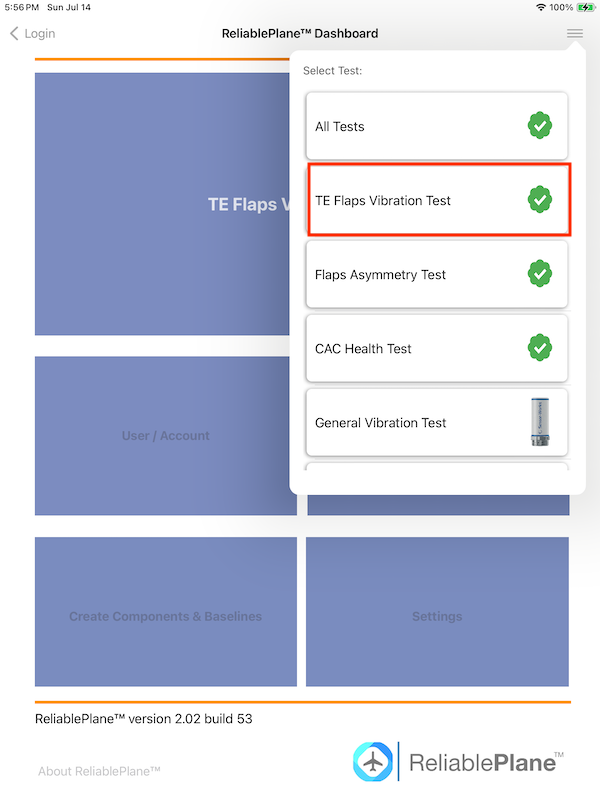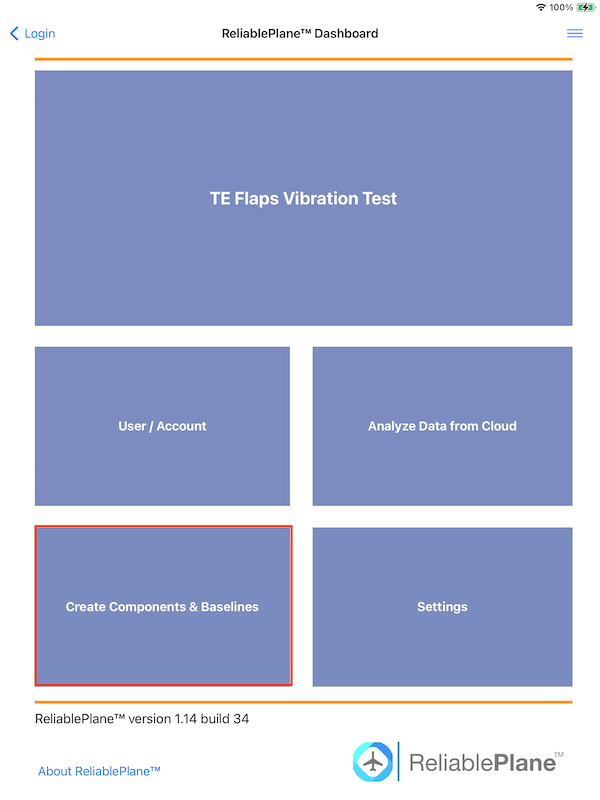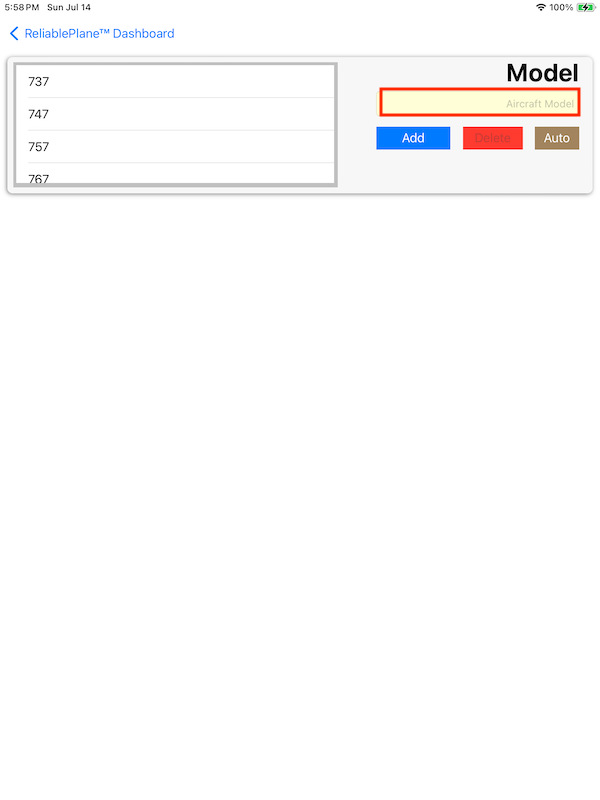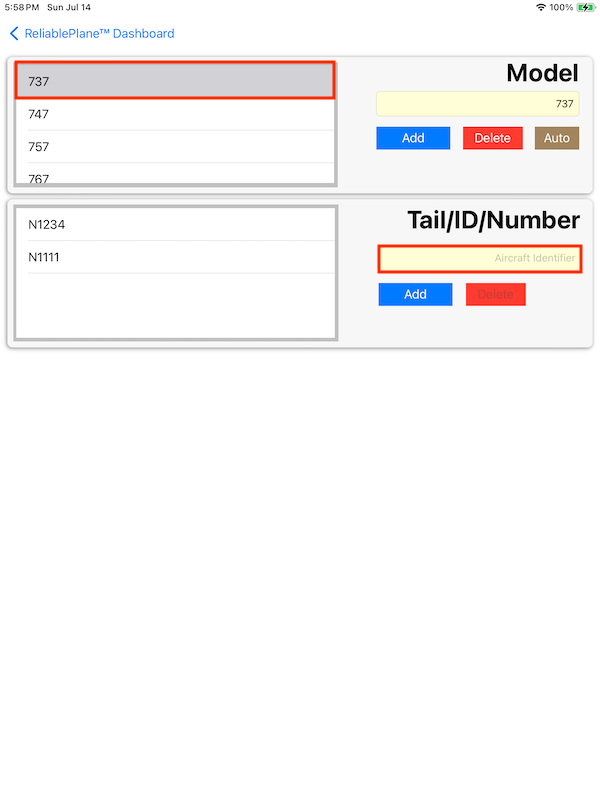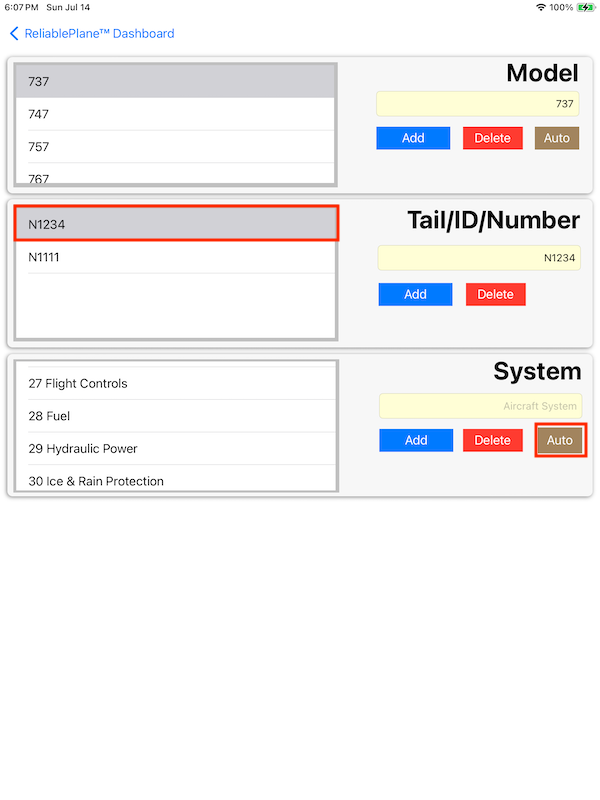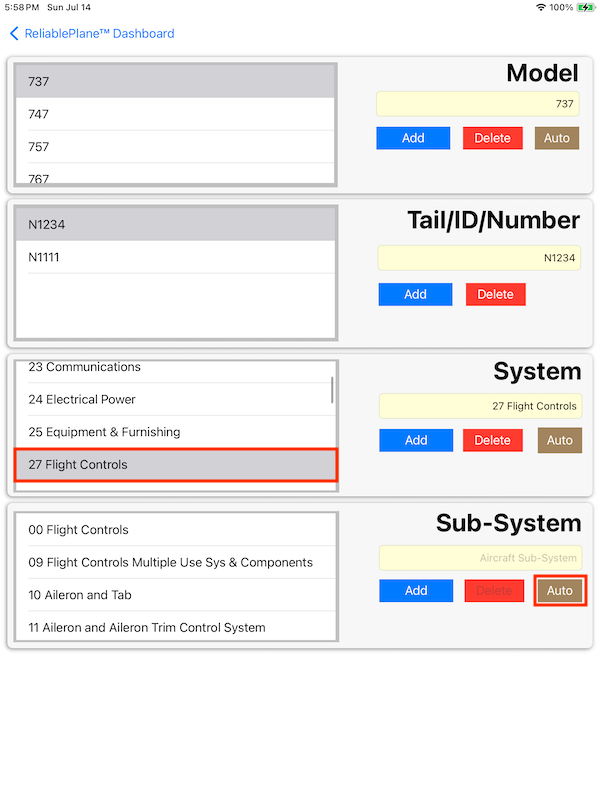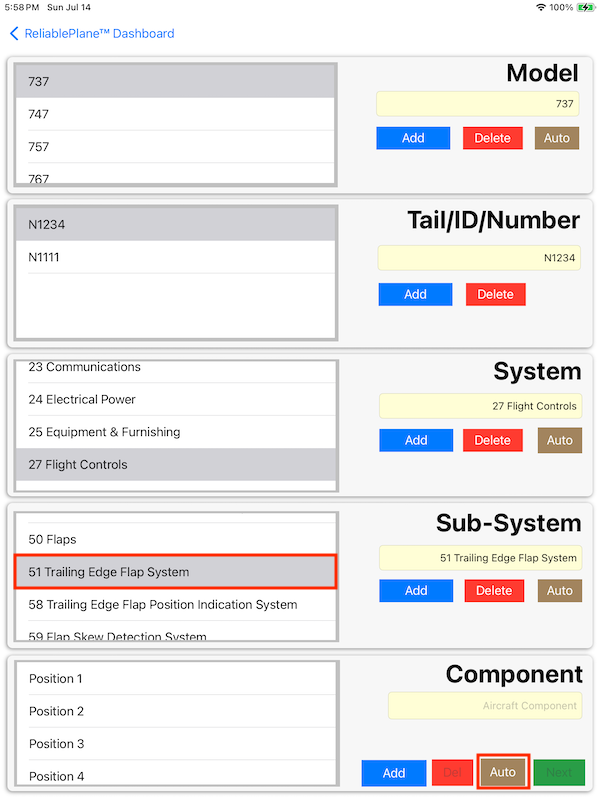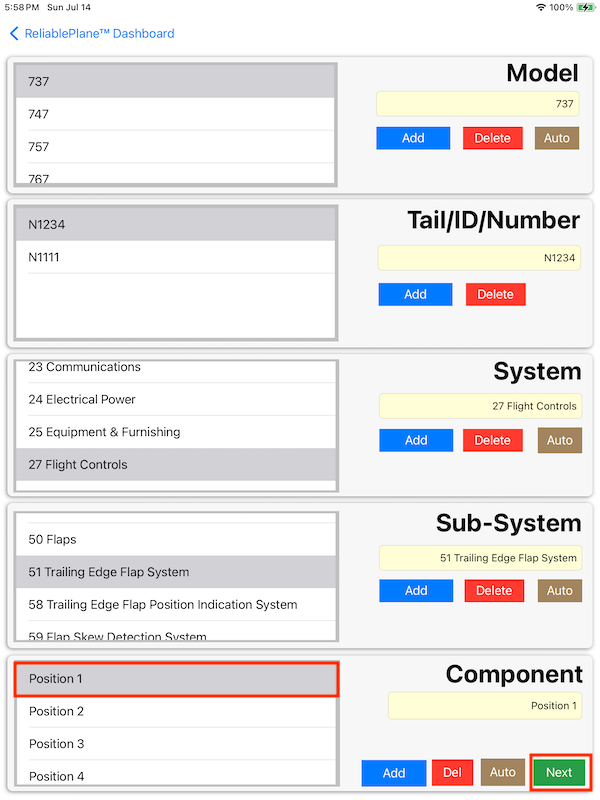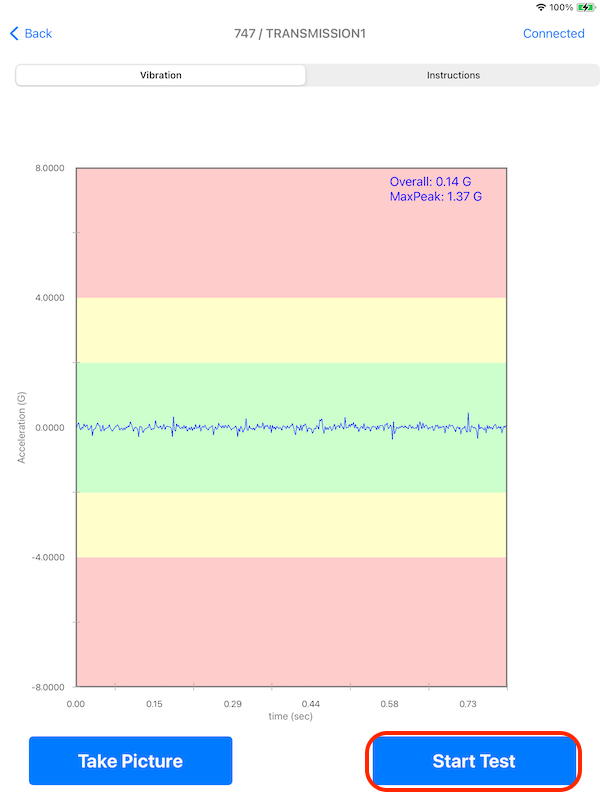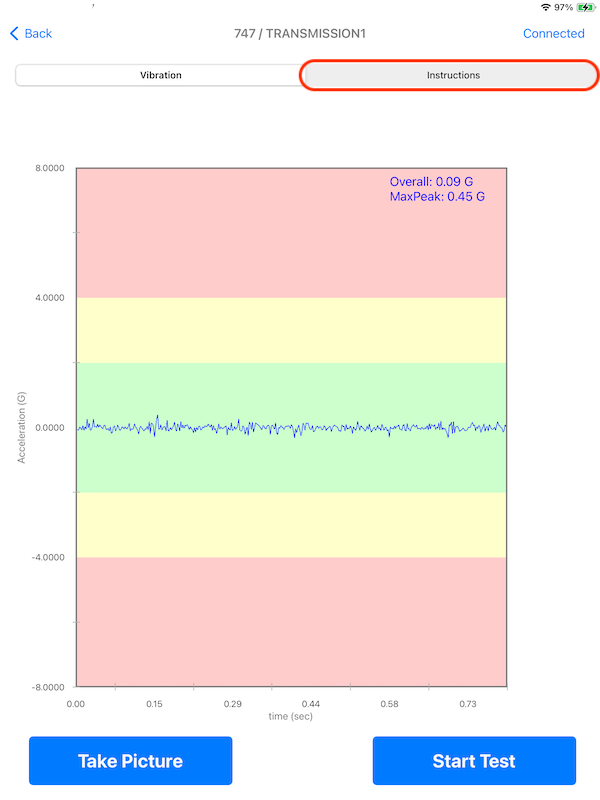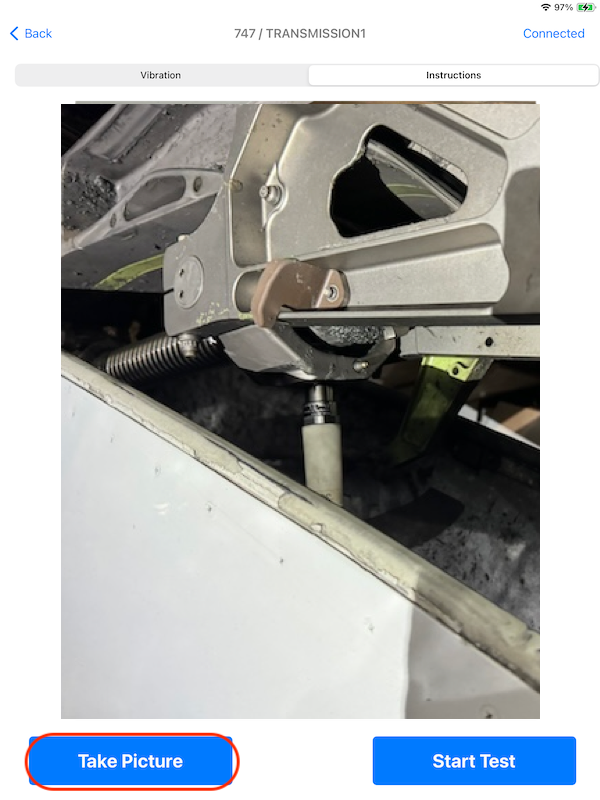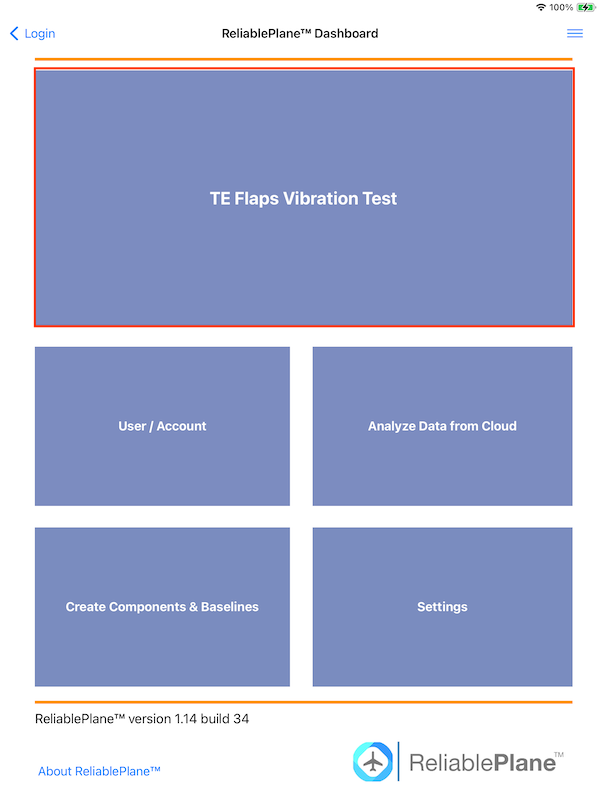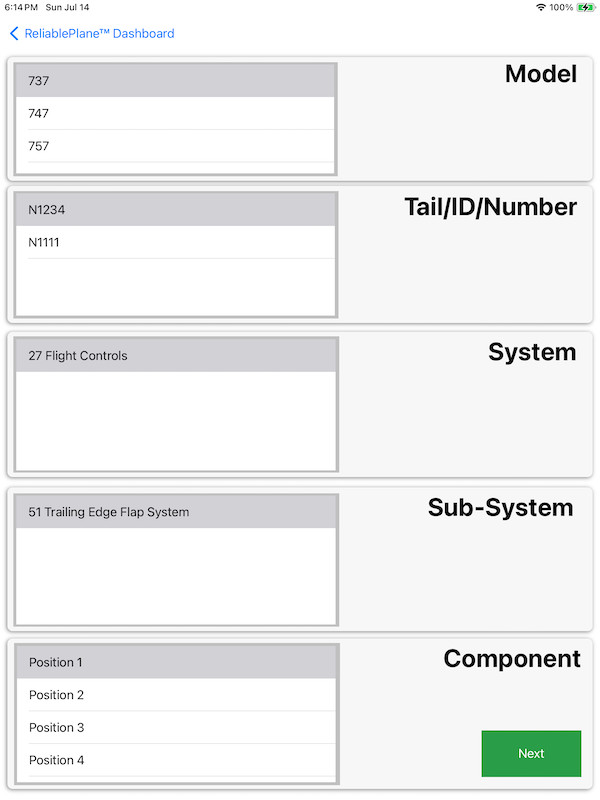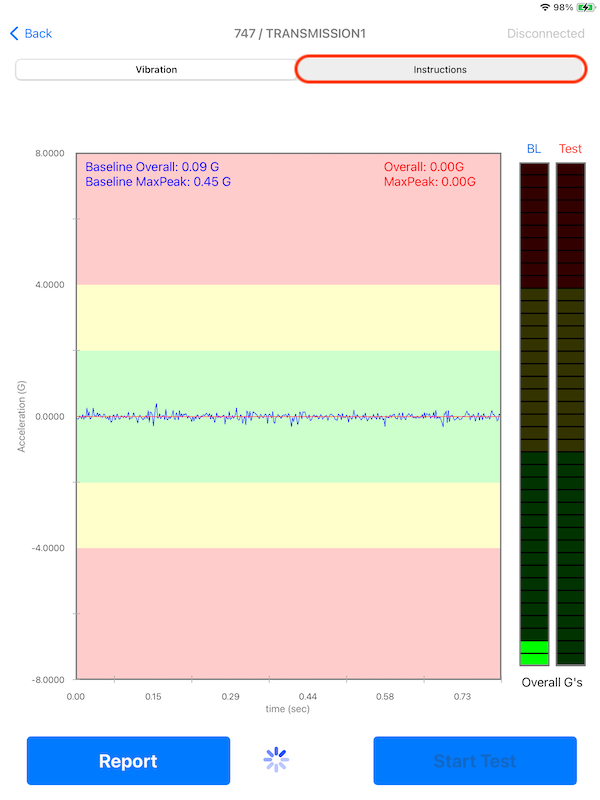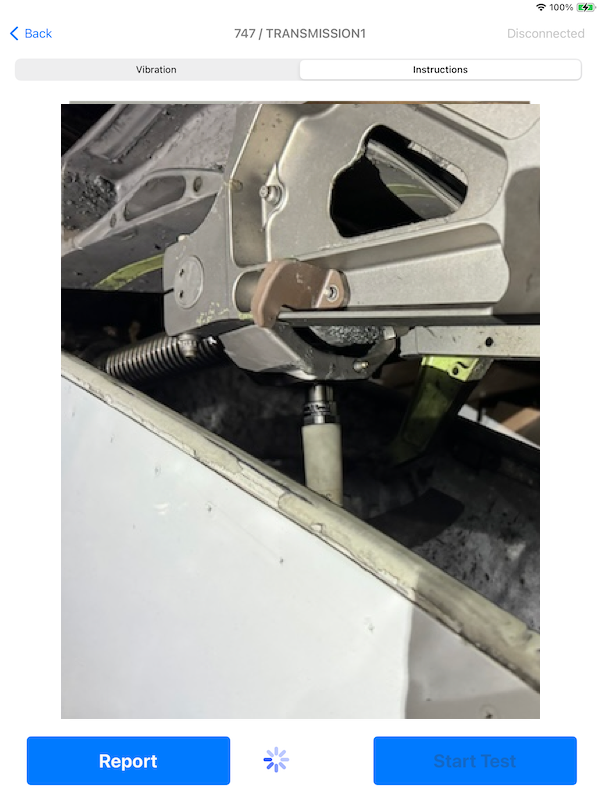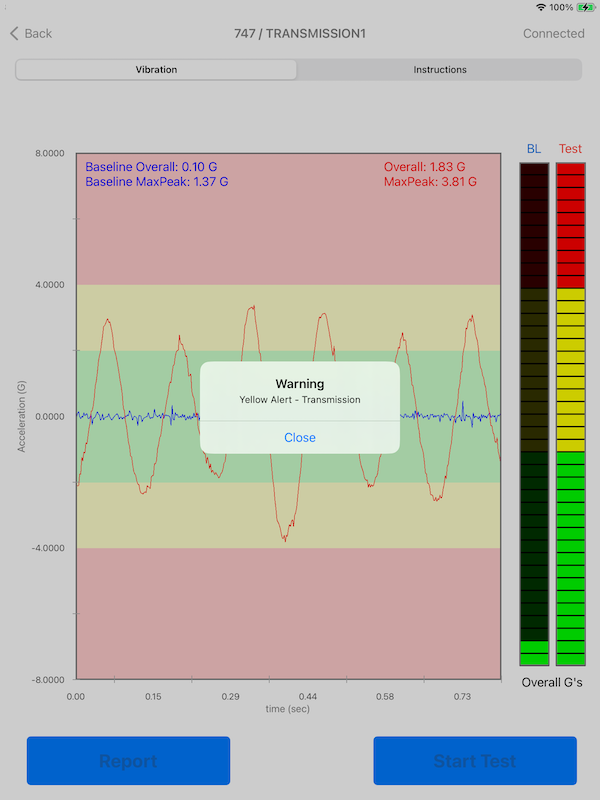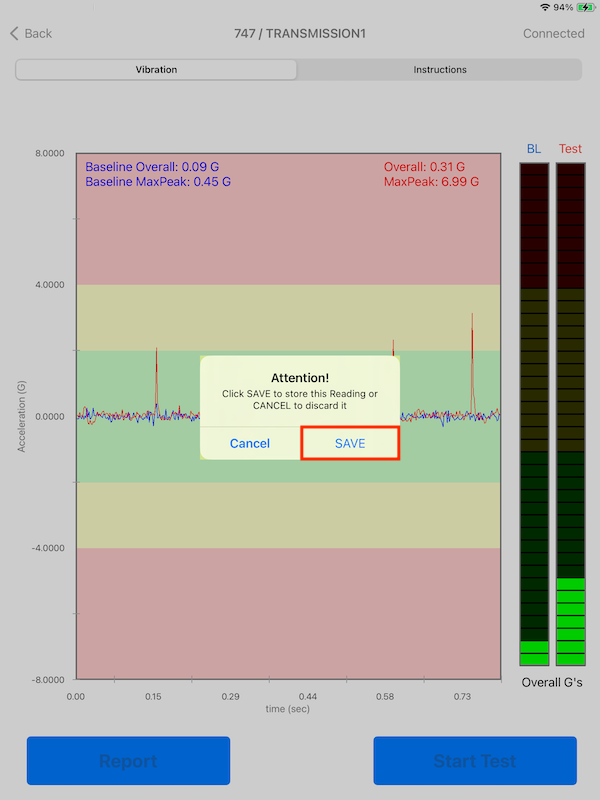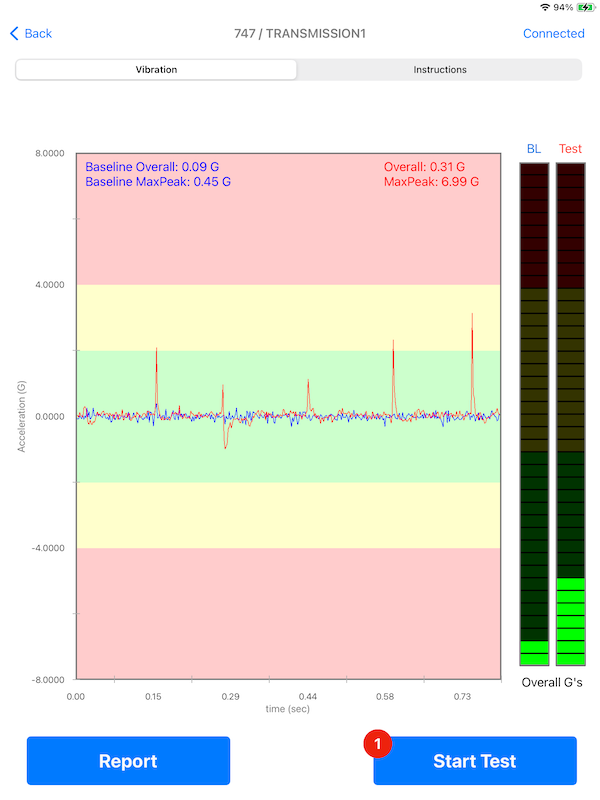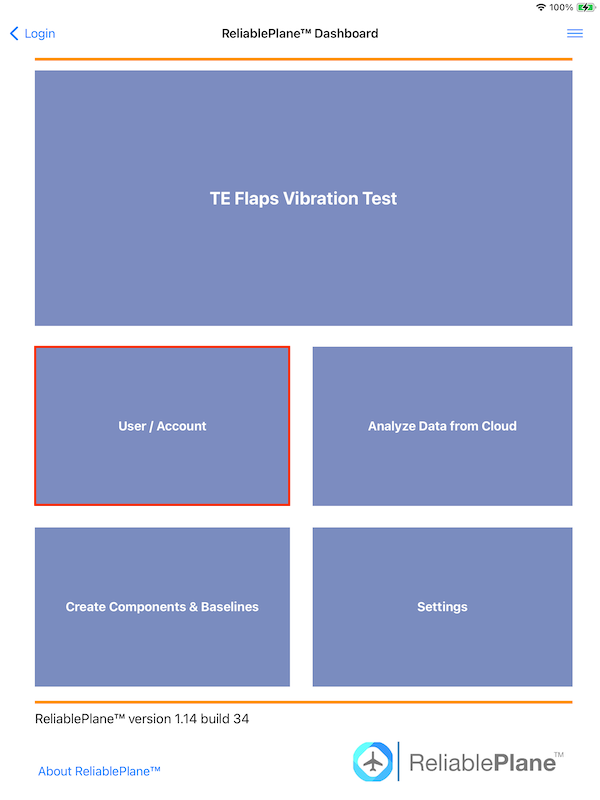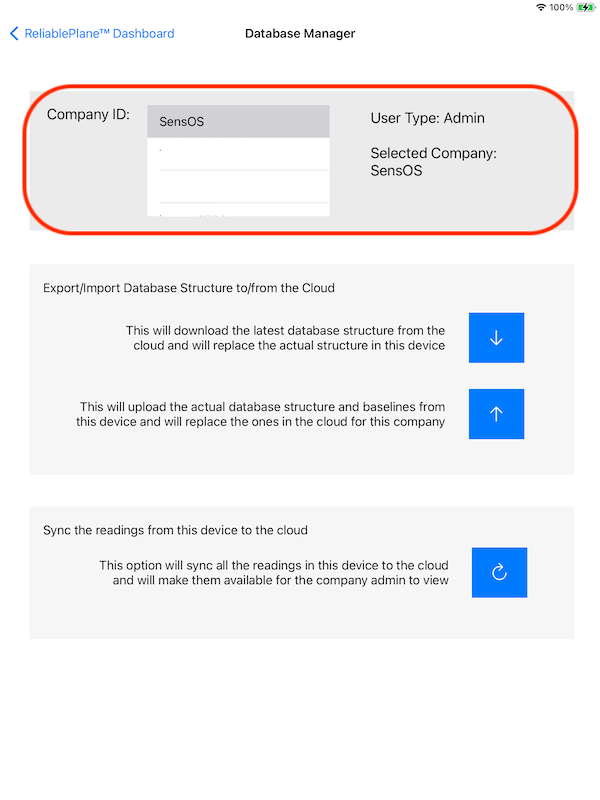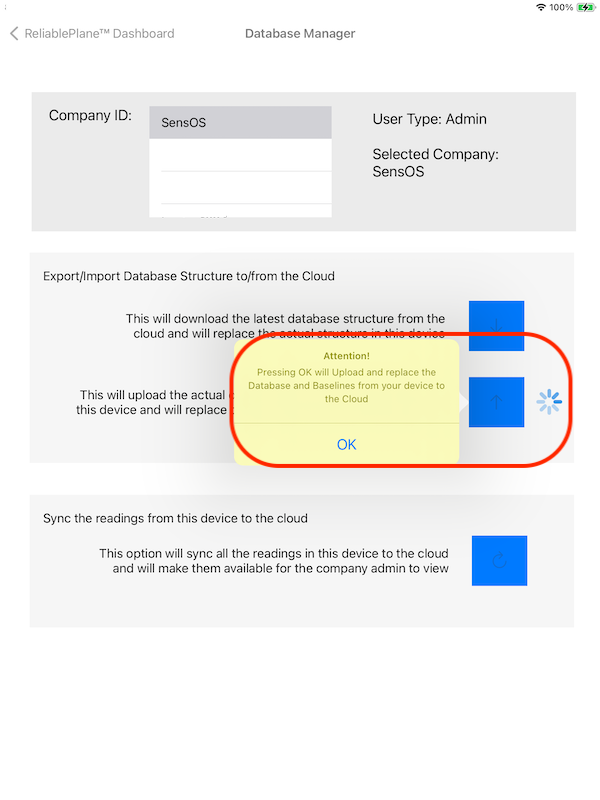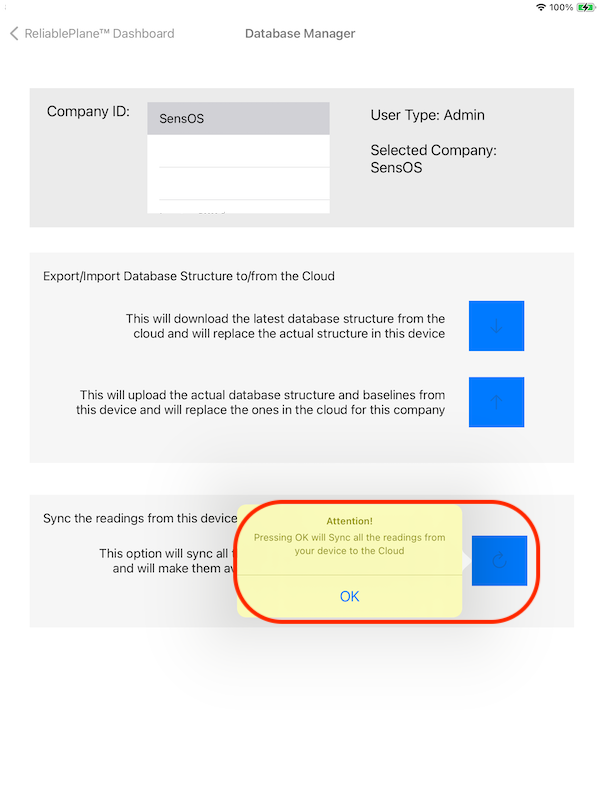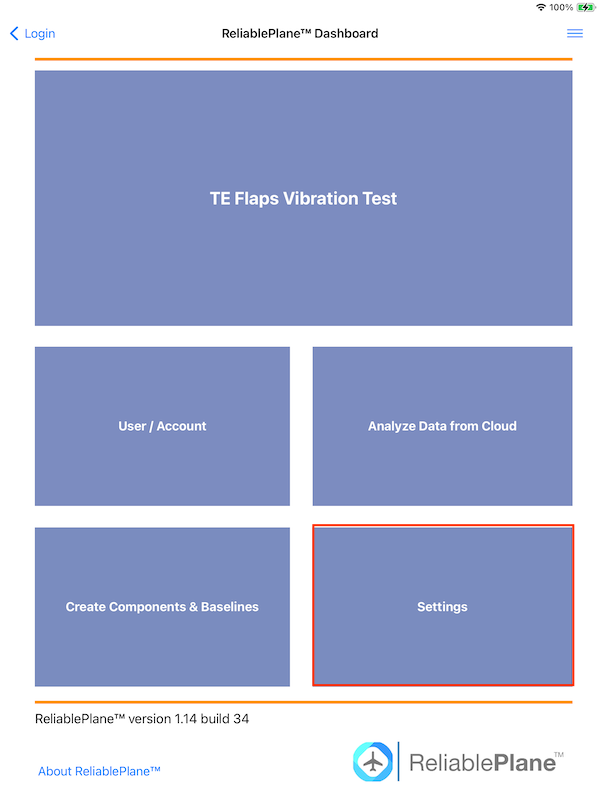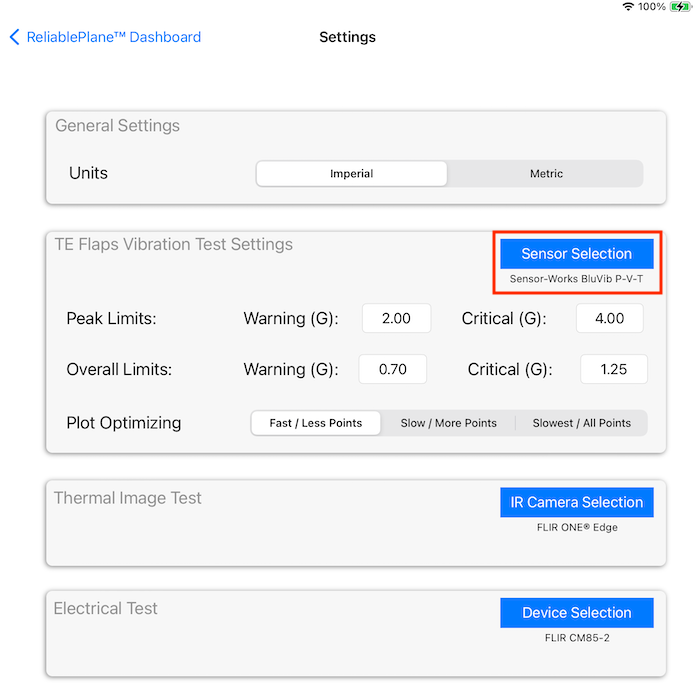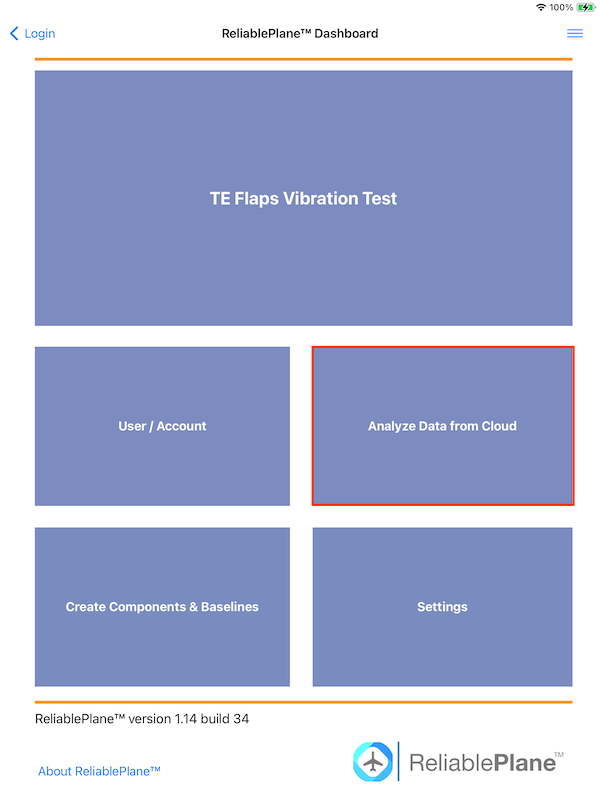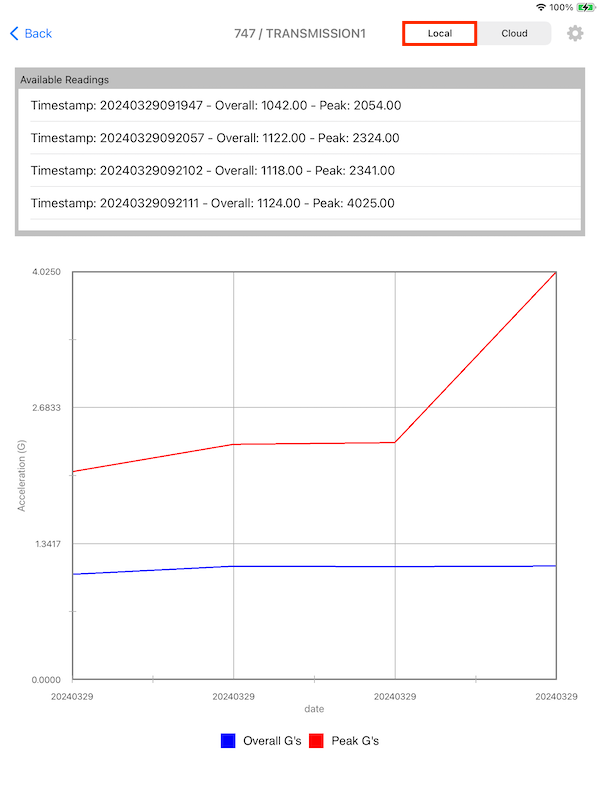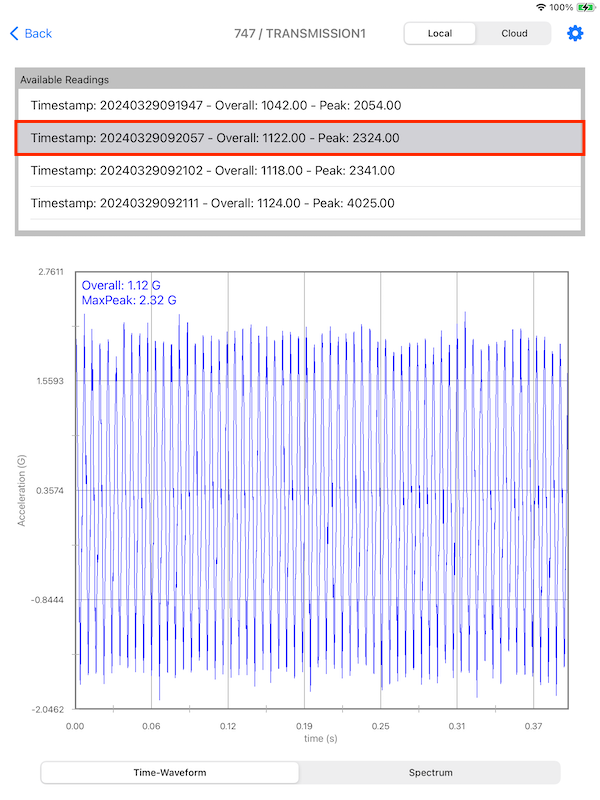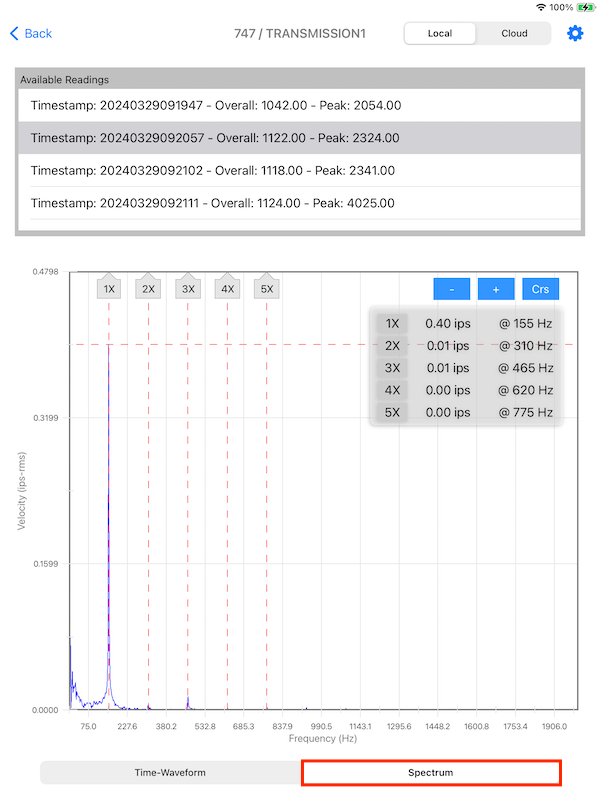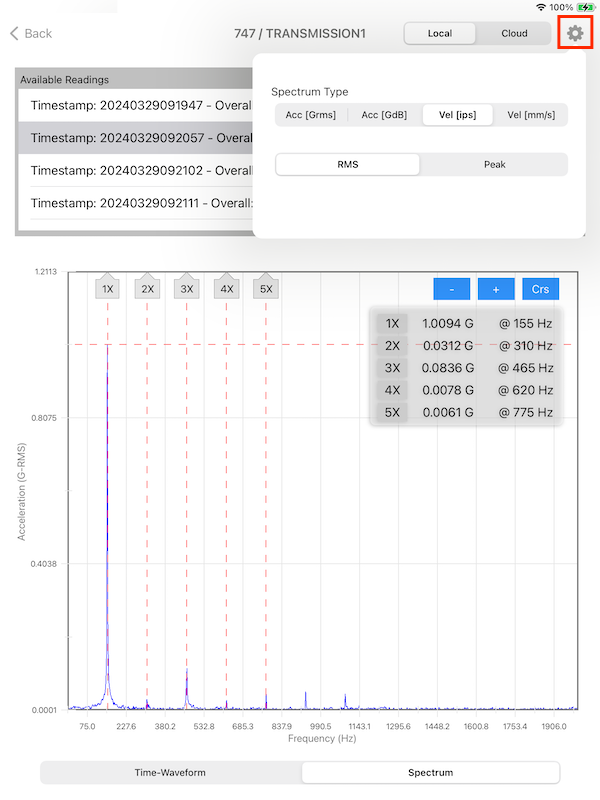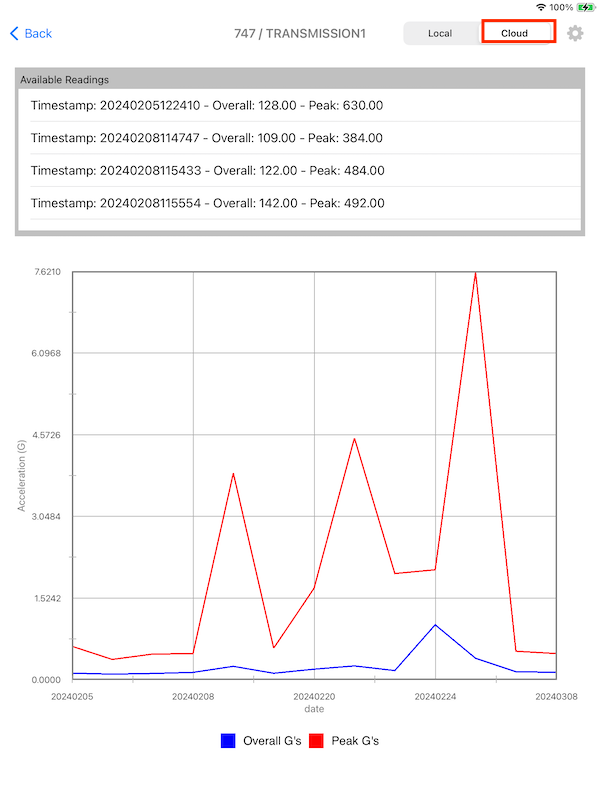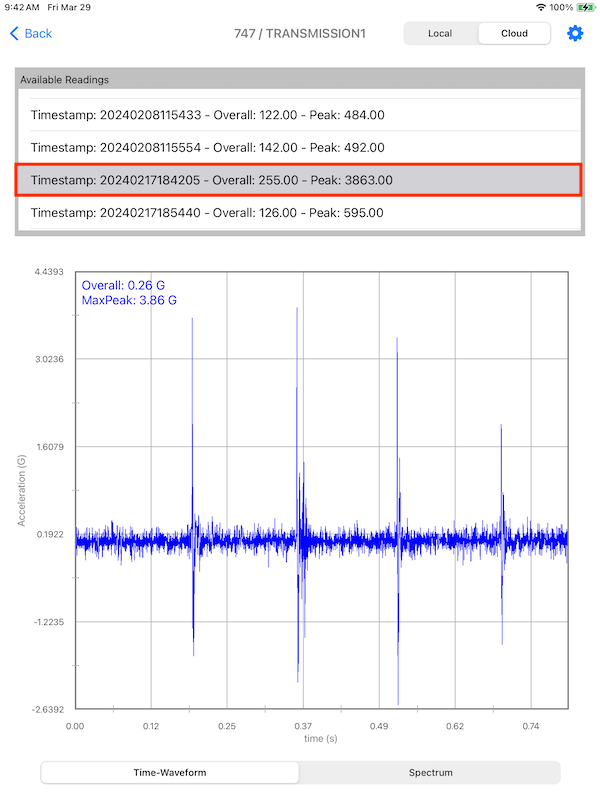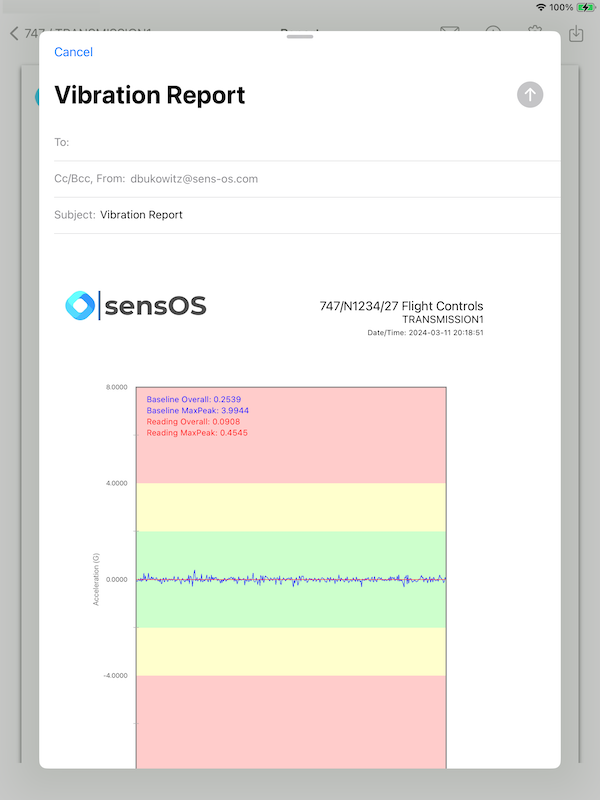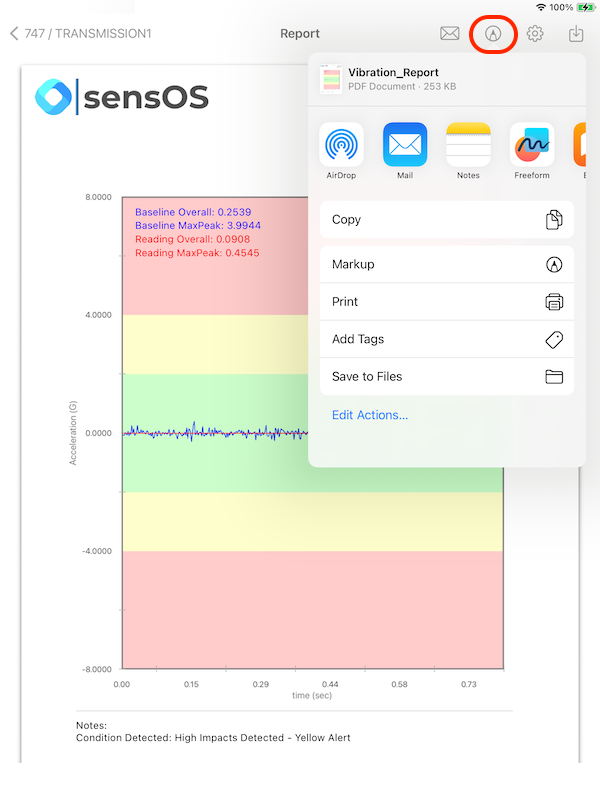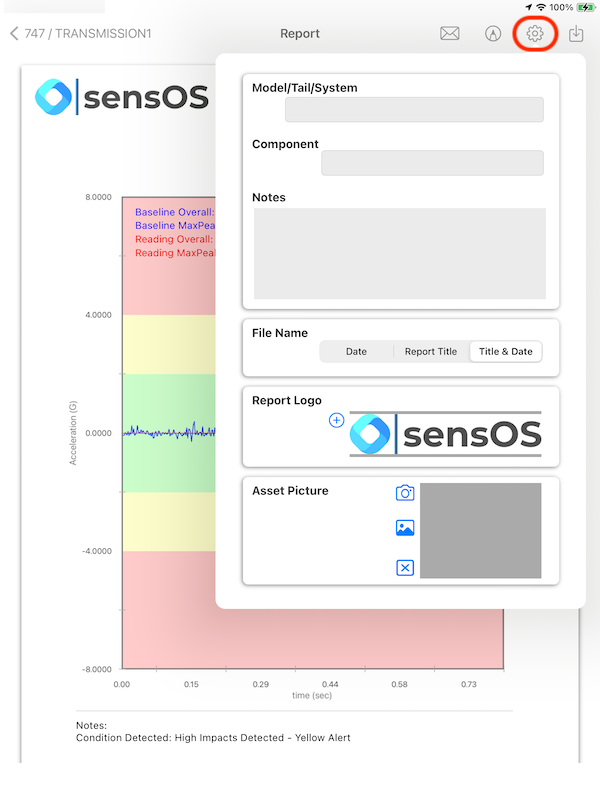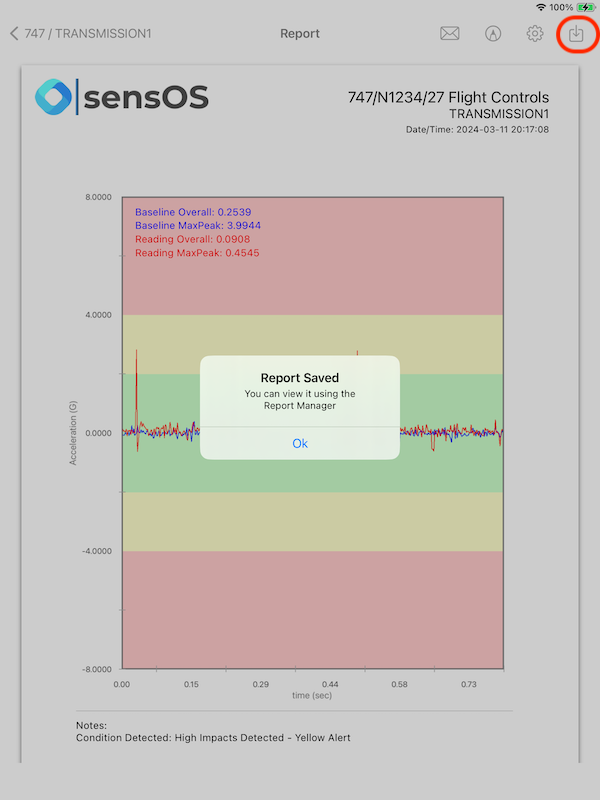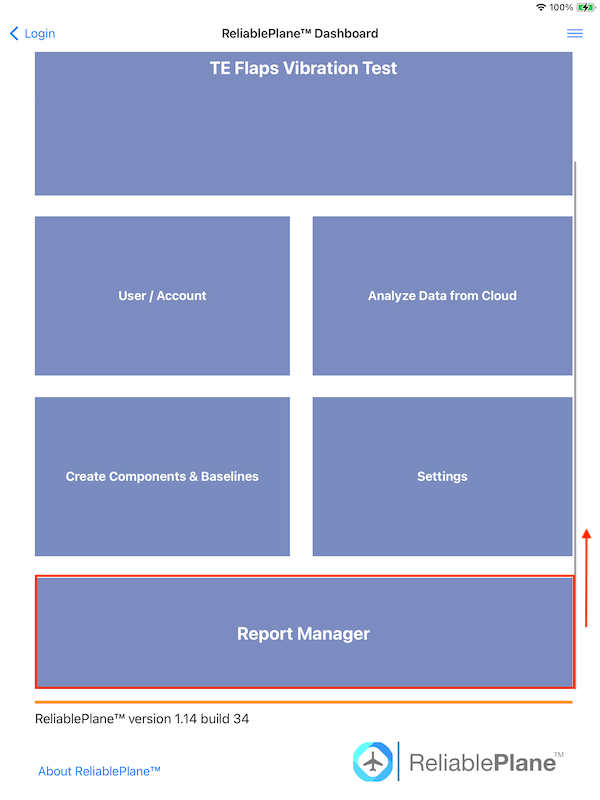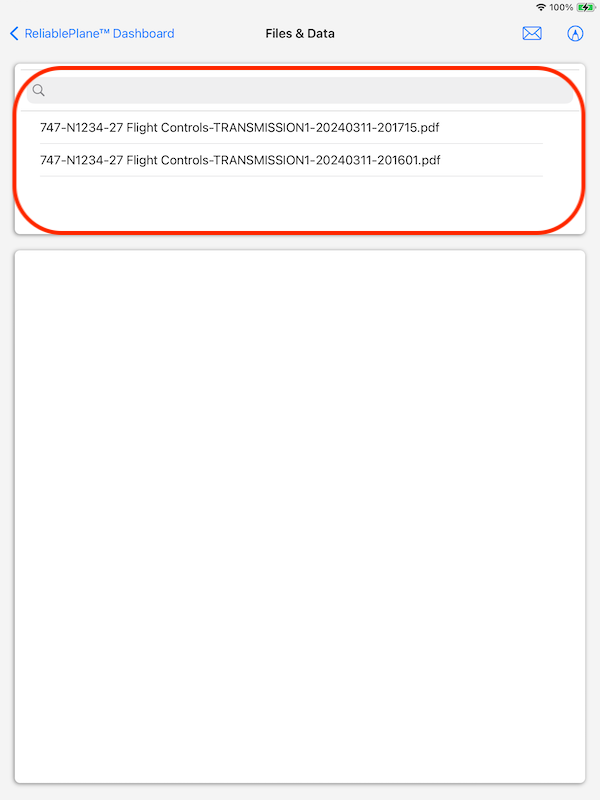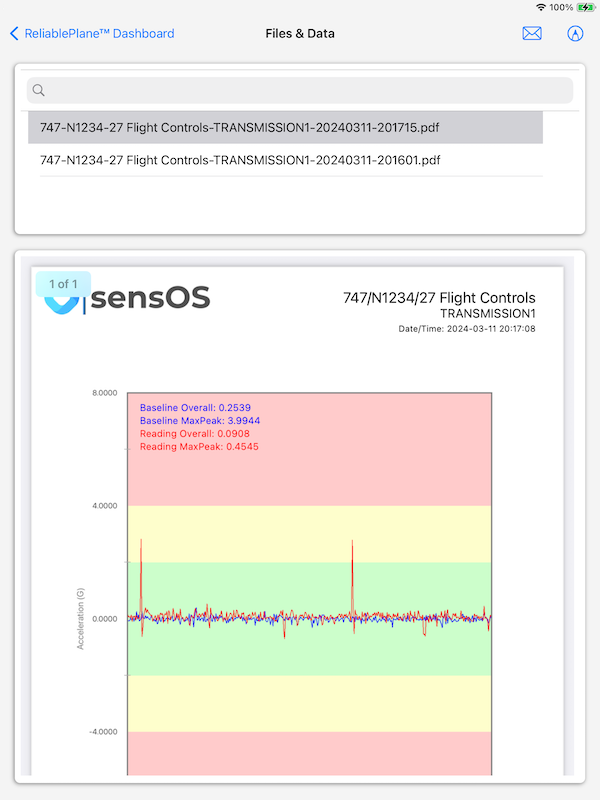Documentation
Trailing Edge Flaps Vibration Test
ReliablePlane™: Trailing Edge Flaps Vibration Health Test
- Version: ReliablePlane™ 1.12 (b.32)
- Author: SensOS, LLC
- Created: 11 Jan, 2024
- Updated: 11 Mar, 2024
If you have any questions that are beyond the scope of this document, Please feel free to email via info@sens-os.com
Description
The Trailing Edge Flaps Vibration Test, allows the Technician to select a specific Aircraft Model, Tail/ID, System, Sub-system and Component; and perform a full Vibration Test. The results will be compared with the previously measured baseline. The software will also calculate the overall and max peak values and will display a message in case a fault is detected in the transmission or ballnut.
Compatibility
This module is compatible with the following sensors:
- SensorWorks BluVib P-V-T
- TPI-9075
1-Channel / Wireless BLE Piezo-Sensor
Fmax: Up to 10,000 Hz
Spectral Lines of Resolution: Up to 12,800
1-Channel / Wireless BLE Piezo-Sensor
Fmax: Up to 10,000 Hz
Spectral Lines of Resolution: Up to 25,600
To switch sensors in the app, see: Settings
Baseline Measurement
- Open the ReliablePlane™ App, login and select TE Flaps Vibration Test from the the type of test from the top menu button. Close the pop-up view by clicking on the background outside of the box.
- Press the Create Components and Baselines button from the main dashboard
- To create a new Aircraft Model, enter the name in the field and press the ADD Button. The user can also press the AUTO button to create all the available Boeing Aircraft Models (Recommended). To delete a model, select it from the list and press the DELETE button. To download an already creted database structure see: User/Accounts
- Select an Aircraft Model from the list. To create a new Aircraft Tail/ID Number, enter the name in the field and press the ADD Button. To delete a Tail/ID Number, select it from the list and press the DELETE Button.
- Select an Aircraft Tail/ID from the list. To create a new Aircraft System, enter the name in the field and press the ADD Button. The user can also press the AUTO button to create the available ATA Chapter Systems automatically (Recommended). To delete a System, select it from the list and press the DELETE Button.
- Select an Aircraft System from the list. To create a new Aircraft Sub-System, enter the name in the field and press the ADD Button. The user can also press the AUTO button to create the available ATA Chapter Sub-Systems automatically (Recommended). To delete a Component, select it from the list and press the DELETE Button.
- Select an Aircraft Sub-System from the list. To create a new Aircraft Component, enter the name in the field and press the ADD Button. The user can also press the AUTO button to create the available ATA Components automatically (Recommended). To delete a Component, select it from the list and press the DELETE Button.
- Select the Component where you want to create the baseline and press the NEXT Button
- Turn the Sensor on (The App will display "Connected" on the top right corner) and place it on the selected transmission point, start moving the flaps and press the Start Test button to collect the Vibration Data, wait until the plot appears on the screen.
- The user can take a reference picture of the sensor location, which will be saved to be used as instructions for the tests. Select the Instructions option on the top of the screen, and then press the Take Picture button. The camera interface will appear and the user can take a picture and then press the Use Photo button to store the picture.
Note: This option will be Enabled only for users with Admin Role.
Note: Press back to return to the previous page and select another component to baseline, or return to the main menu. The baseline and database structure can be uploaded to the Cloud, see: User/Accounts
Test Procedure
- Open the ReliablePlane™ App and select TE Flaps Vibration Test from the the type of test from the top menu button. Close the pop-up view by clicking on the background outside of the box.
- Press the TE Flaps Vibration Test button from the main dashboard
- Select the Aircraft Model / Aircraft Tail-ID / Aircraft System / Aitcraft Sub-System / Aircraft Component from the tables and press the NEXT button. The fields will be filtered to show only the TE Flaps Vibration Test System/Sub-System/Components
- The baseline for the point will be ploted in blue color. Select the Instructions button on the selector in the top of the screen to show the correct position to mount the sensor.
- Select the Vibration button to get back to the plot. Turn ON the sensor (The App will display "Connected" on the top right corner) and start moving the flaps, press the Start Test button to collect the vibration data. After collecting the viration the test vibration waveform will be displayed on the plot above the baseline for comparisson. If a fault is detected the software will show a pop-up with the detected problem. Click the Close button on the pop-up to continue.
- A new pop-up will appear allowing to SAVE or CANCEL the reading. Once a reading is saved a bubble will appear besides the "Start Test" button indicating the number of readings taken for this component. The user can take as many readings as needed, once the data is sync'd to the cloud the reading count will be reset. see: User/Accounts to learn how to sync the readings to the cloud.
- To generate an instant Report, press the Report button; see the Report section
Note: Press back to return to the previous page and select another component to test, or return to the main menu. The collected vibration data can be sync to the Cloud, see: User/Accounts
Cloud Management
- In the Main Dashboard select Users / Accounts
- The List of available Companies will appear on the Table. Press one company (row) from the list to download or upload data to it. The Role of the user will also appear on this section.
- To Download a Database/Baselines to the device, press the ⬇️ button and then press on the OK button, to Cancel press in any place outside the yellow pop-up. This will start downloading the whole database structure, baselines and instructions/pictures into the device. The process can take a few minutes depending on the size of the database, but this process will continue on the background, if the user decides to leave this page.
- To Upload the actual Database/Baselines in the device to the Cloud, press the ⬆️ button and then press on the OK button, to Cancel press in any place outside the yellow pop-up. This will start uploading the whole database structure, baselines and instructions/pictures to the Cloud The preocess can take a few minutes depending on the size of the database, but this process will continue on the background, if the user decides to leave this page.
- To Sync collected data from the tests, press the 🔄 button and then press on the OK button, to Cancel press in any place outside the yellow pop-up. This will start the sync of all the collected data to the Cloud. If the user leaves the page the process will continue in the background. The collected data can be now viewed in the WebApp on any browser (https://app.reliableplane.com)
Note: The device will need Internet connectivity for this features.
Note: The Upload button will be enabled only for the Admin user role.
Settings
- In the Main Dashboard press the Settings button.
- The TE Flaps Vibration Test Settings will allow the user to switch the vibration sensors by pressing the Sensor Selection button. A pop up will appear and the user can select any available sensor. The selected sensor name will be displayed below the button.
- In the Settings view, the user can also change the default vibration thresholds and select the ploting resolution. (Selecting a plot will more points will make the ploting time increase in the baseline and test vibration waveforms.
Note: This option will be Enabled only for users with Admin Role.
View Data from Cloud/Local
- To view data stored in the iPad or the data already uploded to the cloud (by any user in the same company) press the Analyze Data from Cloud/Local button in the Main Dashboard.
- Select the Aircraft Model / Tail / System / Sub-System / Component and the press Next
- If the data source selector is set to Local, the list of not yet uploaded readings will be displayed (timestamps). On the bottom the overall and peak values trends of those readings will be displayed. Press on any reading from the list to display the vibration time-waveform plot.
- To see the Spectrum plot of the selected reading, press the Spectrum button on the bottom of the screen. To display the cursors, press the "Crs" button; add or remove cursors with the "+" or "-" buttons. To switch between Acceleration/Velocity spectrum press the Configuration button on the top bar.
- To view the data already uploaded to the cloud, select the Cloud option. The list of all uploaded reading will be displayed (timestamps). On the bottom the overall and peak trends of those readings will be displayed. Press on any reading from the list to display the vibration time-waveform plot. Press the Spectrum to switch to the Spectrum Plot.1
Note: The device will need Internet connectivity for the cloud feature. Local readings will be available without internet connection.
Report
- The report section has several options on the top bar menu: a)send by email, b)markup, c)configuration, d)Save Local.
- Pressing the Email button will generate an email with the report as an attachment. The user can modify the subject and/or add text to it.
- Pressing the Markup tool button will open a popup allowing the user to draw on the pdf and share it using different options available in the iPadOS.
- The Configuration button will open a popup allowing the user to change the name of the report, add the company logo, add a picture, add notes and change the name of how the pdf file is saved. By default the file will be saved as a timestamp, but the user can select to add the aircraft information with or without the timestamp.
- The Save button will save the report locally in the iPad and the user can access it later using the Report Manager. See: Report Manager section. After the report is saved a popup will appear with the message "Report Saved".
Note: If a fault condition was detected during the test, it will show in the notes at the bottom of the page.
Note: By default the title of the report will show the Aircraft information in the form of a path: Aircraft Model / Tail / System / Component.
Report Manager
- In the Main Dashboard scroll up and press the Report button.
- A list of all saved reports will appear on top of the page. The user can also use the search bar to filer the list.
- Press on a Report and the pdf will display on the screen. The user can email or markup the selected report using the buttons on the top menu bar, this buttons have the same functionality explained in the Report section, see: Report
Changelog
See what's new added, changed, fixed, improved or updated in the latest versions.
Version 2.02 b.53 (14 Jul, 2024)
- Added Sub-System Level to Hierarchy
Version 1.12 b.32 (11 Mar, 2024)
- Added Report Manager
Version 1.09 b.29 (08 Mar, 2024)
- Modified Reading Save/Cancel Popup
Version 1.07 b.27 (25 Feb, 2024)
- Added Sync Popup in Cloud Management
Version 1.01 b.01 (11 Jan, 2024)
Initial Release
